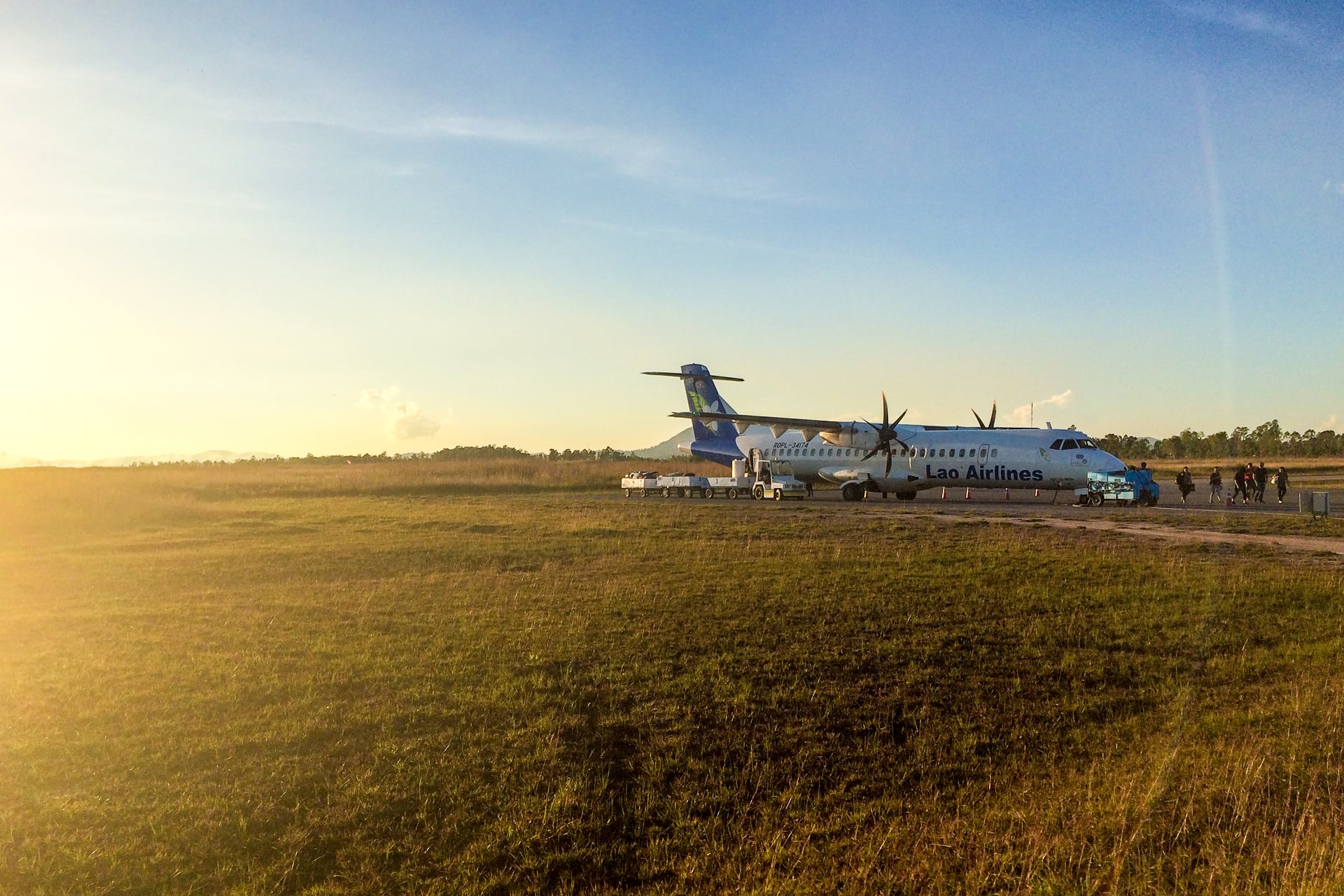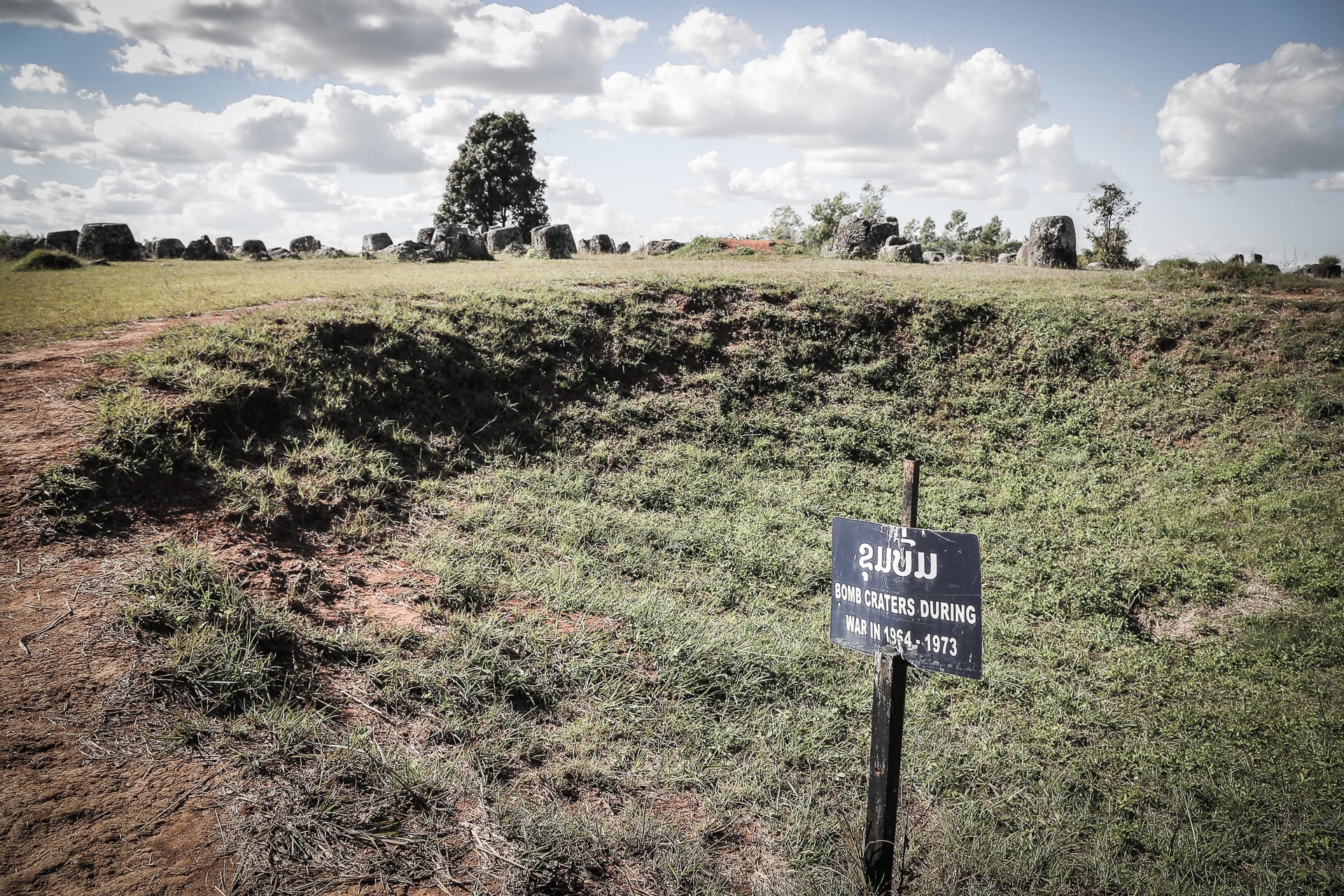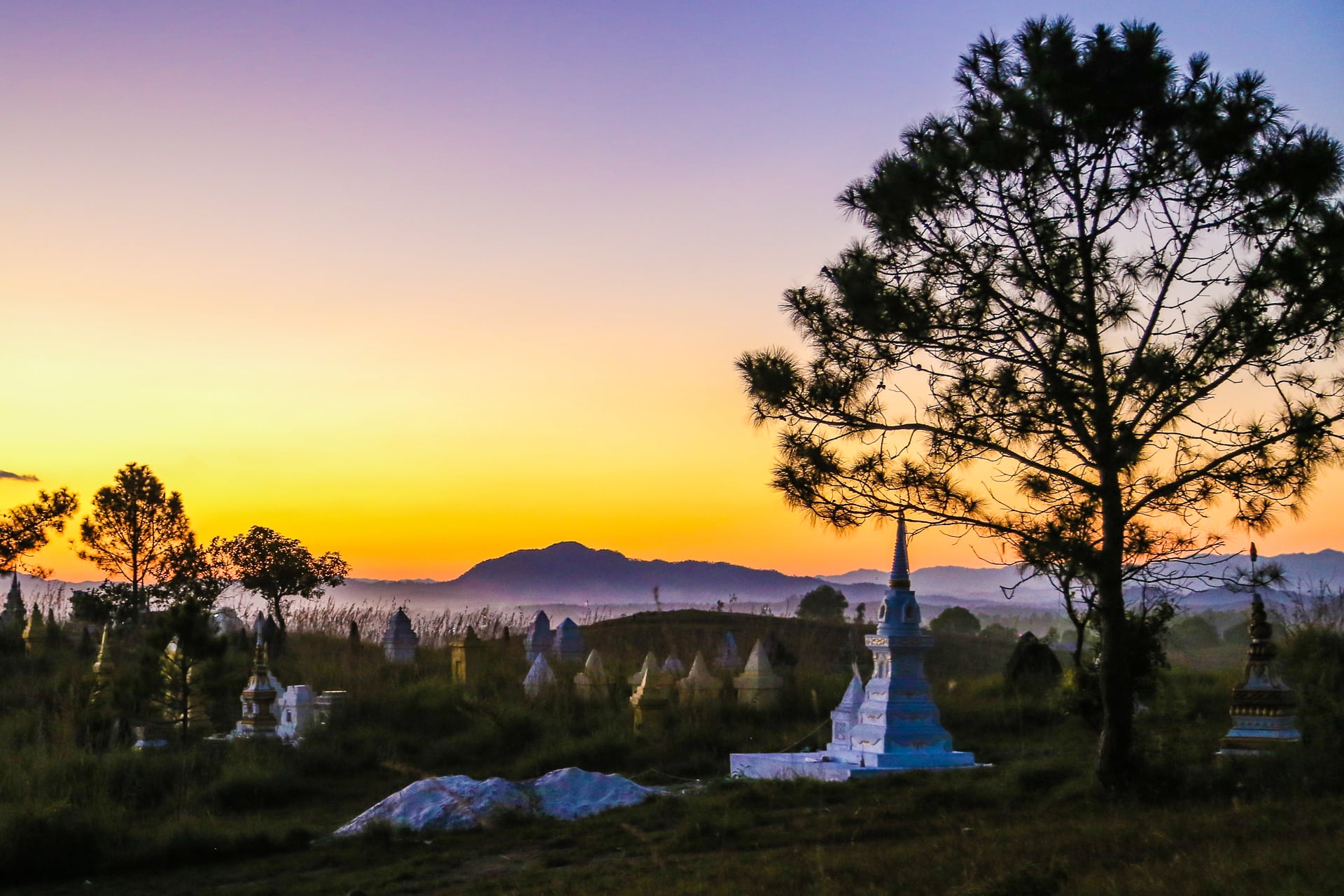
Welcome to Xieng Khouang Province, gateway to northeastern Lao PDR. The frontier, both culturally and literally. A mere 50 miles beyond those hills lies Vietnam. Xieng Khouang is not what backpackers or tourists think of when they think of Laos, if they think of Laos at all.

We’re here for–you guessed it–one of Lori’s work trips. She and other members of the Handicap International rehabilitation team are continuing their year-end visits to Provincial Rehabilitation Centers (PRC) across the country. There are four of these government-administered centers addressing a range of congenital/hereditary and acquired disabilities. At this particular PRC, however, acquired far outnumber hereditary.

As I touched on in the previous post, deplaning at Xieng Khouang airport is a bit unique in itself. At 1,080 meters (3,543 ft.) we’re high up in Laos terms. The air is cool and dry in the late afternoon when we arrive, and the sun casts an intense yellow over the parched fields and rolling hills. It feels more like Wyoming in the summer than Southeast Asia.

The airport is a one-room affair, where luggage is deposited in the waiting area with little fanfare. An aging red fire truck sits off to the side, keeping watch over the old landing strip, while weeds fight their way through the cracks in the tarmac. “Immigration” officials flag foreigner-looking passengers to record their arrival and departure. On the other side of the entry way is the capital city, Phonsavan.

While I personally didn’t feel the need for a jacket (it was quite pleasant in the evening), we felt compelled to put one on Noe, lest we get an earful from local women who bundle their children in heavy layers to the extent that you’d think it was Siberia if you saw these children on TV. By midday, it did get up to around 80F, but dry and very pleasant — a far cry from Vientiane at midday.

The first few nights, we stayed at Jennida Guesthouse on the main drag, a few doors down from Cranky T.’s cafe. Perfectly sufficient by any measure, but we thought it might be nice to have a change of scenery for the weekend and moved across the street to Nice Guesthouse, where US$12 got us a clean and very adequate fan room on the 3rd floor with a large communal balcony space overlooking downtown. If we hadn’t needed the extra space for Noe’s travel crib, we could have gotten a cheaper room on the 2nd floor. That’s $2 you owe us, Mister.

Phonsavan, Phonsavan. There’s definitely a sense that not much happens in Phonsavan, which was a big part of the allure for us. It’s relaxed and unpretentious vibe is an appealing break from Phontan Village in Vientiane, and it’s always nice to not have to think twice about fighting traffic to cross the street. Pleasant and livable describes Phonsavan, though I know I’m unique among visitors in that respect. Lori and I did agree that we’d consider a move up here after her contract, if an opportunity arose. It’s just that kind of a place.
Phonsavan was built in the late 1970s from scratch to replace the former capital, Xieng Khouang, which was decimated in the 60s and 70s. The city’s modern concrete architecture reflects its recent history, though large tracts outside of downtown have a work-in-progress feel to them. The city’s current population of around 31,000 lives in a wide valley surrounded by rolling hills and largely consists of Phuan, Hmong, Khmu, and Tai Dam ethnic groups, though a number of Chinese, Vietnamese and international workers have relocated here in recent decades.
So, what exactly does one do with a baby in Phonsavan? Well, there’s always the cemetery…

I will admit that it’s a lot easier in a place like Luang Prabang to fill the day with an infant. But that doesn’t mean that Phonsavan is completely devoid of fun activities for the little ones.

Earlier this morning, I spotted a list of top things to do in the city. If Phonsavan is known for anything in the greater world, it’s as the jumping off point for seeing the Plain of Jars, a series of Iron Age archeology sites nominated for UNESCO World Heritage status. The closest site is a bit outside of town, and Lori and I will be visiting them together. I wanted to limit my roamings with Noe to the center of town, which narrowed my options considerably.
Naturally, we started our day off at a coffee shop — Cranky T.’s to be exact (which has awesome set breakfasts and good coffee).
Next, we took a stroll on down to the UXO Information Centre — next to the MAG (Mines Advisory Group) visitors center — where there is a small handicraft shop and well-done exhibit on the work of the Quality of Life Association, which assists UXO survivors. I alluded earlier to the fact that the Provincial Rehabilitation Center here sees far more than the average number of patients with acquired disabilities. “Acquired disability” in most cases in Xieng Khouang means loss of limbs, vision, or really any debilitating trauma caused by Unexploded Ordnance (UXO). As explained in our last post, UXO in the case of Xieng Khouang means unexploded cluster bomblets left over from nine years of U.S. bombardment. In the second most bombed province in the most heavily bombed country on Earth, the folks at the Quality of Life Association, MAG and the PRC keep busy.
Perhaps fatigued by a morning of reading heartbreaking stories of UXO survivors Noe started to become a bit fussy, so we went on a walk. One of the top things to do in town was to walk up to the Chinese cemetery at sunset. Following the the morose mood of it all, now seemed as good a time to take a stroll among the dearly departed.

The walk up to the cemetery is a little over a kilometer north from downtown. The cemetery is unique for mixing Tai Dam animist tombs, with Catholic tombstones, Chinese gravesites, and Lao Buddhist memorials. Just as noteworthy is the sweeping view of the city and surrounding countryside from the hilltop on which the cemetery is perched. From their vantage point, this unlikely mix of memorials stares out at the yellowing valley bearing the conspicuous red scars of a decade of senseless war. At midday, it is the quietest place I can remember in recent memory. Stark silence punctuated by the whistling wind and nothing more. Fifteen minutes pass before Noe begins to stir. Guess its time to head back to town and feed the little guy.
Later that evening after Lori finished with work, we joined her work crew who had hired a driver to visit a few attractions around town. The first was ascending one of Phonsavan’s many hills for sunset views. Given that Vientiane is flat as a pancake, hills are a pretty big deal for us.


The top of this particular hill offered a commanding perspective. The view of the city and surrounding hills reminded us of our hometown in Southern Oregon. In reality, the two towns are not so different from one another. Yet, trying to explain that to a great many back in the U.S. who haven’t spent quality time in a less economically advanced country, particularly if they are set in their views or opposed to stepping out of their comfort zone, can be excruciatingly frustrating.






At sunset we visited Phonsavan’s new Cultural Center. It’s a work in progress and seems a bit out of place in this humble frontier town, but no less impressive.


We had some tasty local food near the market for lunch and thought we might try something a bit different for dinner. Pizza at Bamboozle is highly recommended if you’re ever passing through.







Love the aerial photo, and the red roofs. Can you hike into the ‘outback’ at all?
We love reading your impressions and offering your personal insight on the areas you visit in Laos. Can’t wait to visit the country ourselves.
What a beautiful town!